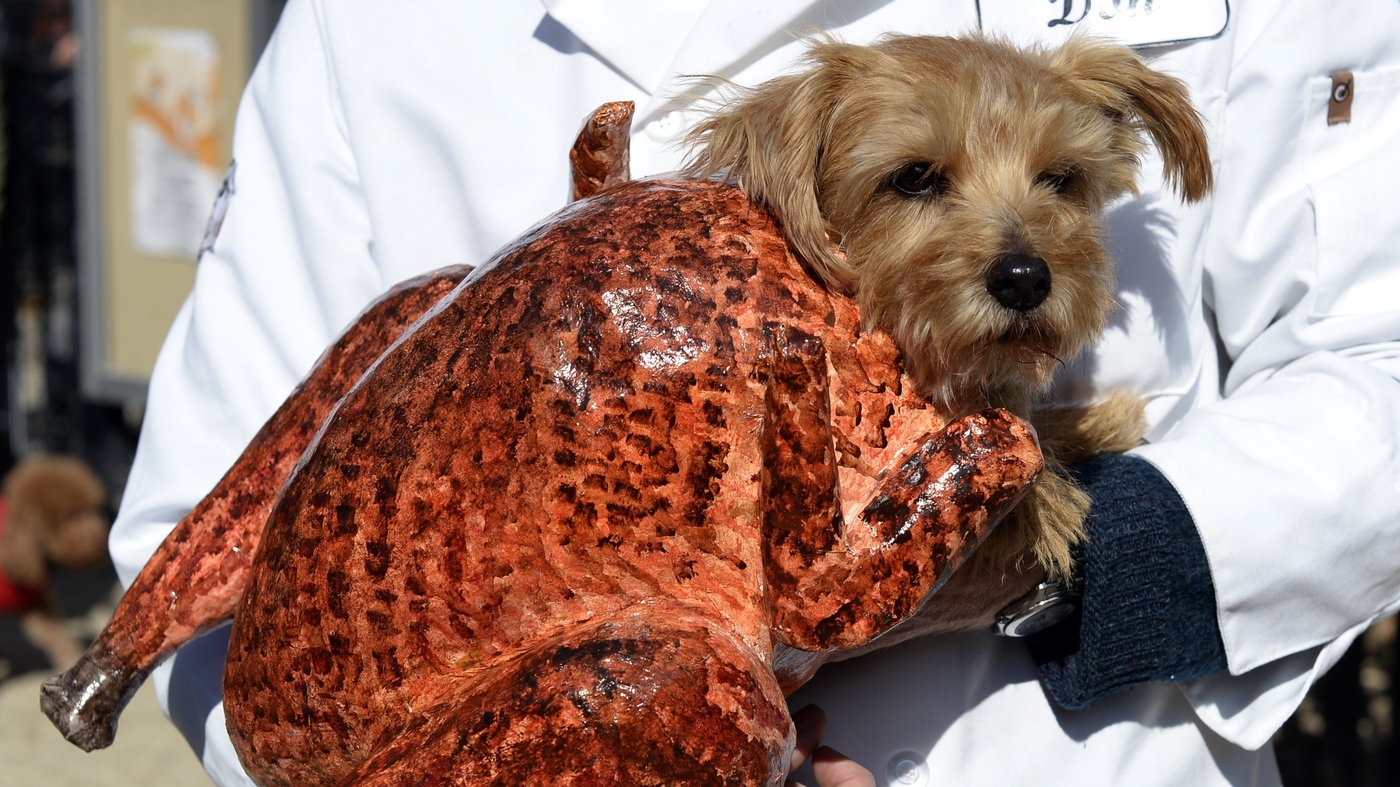- October 29, 2022
- No Comment
- 5 minutes read
It's cute, but is it safe to put your dog in a Halloween costume? – NPR

Giulia Heyward
A dog dressed in a turkey costume at the 2013 Tompkins Square Halloween Dog Parade in New York City. Timothy Clary/AFP via Getty Images hide caption
A dog dressed in a turkey costume at the 2013 Tompkins Square Halloween Dog Parade in New York City.
Every holiday season brings viral videos and social media posts of canines in costumes. And while seeing a pet in a costume is adorable — it can also be dangerous. As Halloween draws near, experts are cautioning pet owners about the popular practice.
More than three-quarters of owners plan to put their pet in a costume this year, and more than half plan to take their dog out trick-or-treating, according to a recent survey published by Rover. But these same kitschy costumes could be affecting the physical, and psychological, health of a canine.
“A lot of pet ownership is selfish,” Annie Grossman, owner and co-founder of School for the Dogs, a dog training facility in New York City. “We have pets more because of our enjoyment of having a pet in most cases. It’s not necessarily in the dog’s best interest — and certainly I can’t think of any good reason why a dog would want to be putting on a costume.”
While researchers have not directly studied how costumes affect dogs, Candace Croney, a professor, and the director of animal welfare science at Purdue University, bases her opinion on “what we know, in general, of dogs relative to their experiences with new stimuli.”
“If the dog has a pet family that normally puts any sort of clothing, handles them, dresses them and tolerates that pretty well, odds are — unless the costume is really aversive — the dog is probably not going to be terribly disturbed,” she said.
And regardless of how used a dog may be to wearing clothing, Croney cautions that costumes should never be ill-fitting, because canines tend to have sensitive or irritable skin, or have anything that limits the dog’s mobility, or could be choked on. And getting near any Halloween candy — especially chocolate — can also be toxic for dogs.
Grossman analyzed the faces of shelter dogs that participated in a Halloween parade years earlier. “People post all these photos of dogs in costumes and, if you have an eye that is trained to look at body language, or look at their behavior, and the dogs all look miserable,” she said.
Signs of stress, according to Grossman, can include excessively licking their nose, shaking their nose and bodies, and looking for places to retreat. And being in crowded places — or seeing other dogs in costumes — can lead to a phenomenon known as trigger stacking: where a stressful situation can exacerbate an already nervous canine.
“They’re not going to cry, or vocalize,” said Rena Carlson, president-elect of the American Veterinary Medical Association. “Watch their mannerisms: Are they panting, pacing or restless? Do they have a soft face? Are their lips nice [and] soft, or are they grimacing a little bit? What are their ears doing? Are their ears back? Can you see the whites of their eyes when you normally cannot? All of those are signs of stress.”
And there are ways to make wearing a costume less of a shock: The more often a dog wears a costume, the more likely they are to understand that it’s temporary, and owners can be mindful of their dog’s body language to monitor their stress. There are other costumes — like a collar around the neck to look like Scooby-Doo or a red tag that resembles one put on Beanie Babies, like Grossman suggests, that are less obtrusive. The School for the Dogs has other safer costume ideas which can be found here.
And all the extra attention a dog receives on Halloween could make the costume worth it for some.
“There are many dogs who seem to — not just tolerate these costumes but — enjoy entertaining their people, or the reaction that they’re getting from their people,” Croney said. “So I certainly wouldn’t want to discourage people whose dogs enjoy that activity. But at the same time, safety is best. And the key to that is always paying attention to what the dog is communicating back.”
Sponsor Message
Become an NPR sponsor

